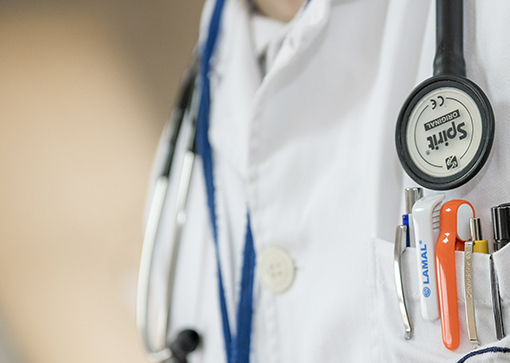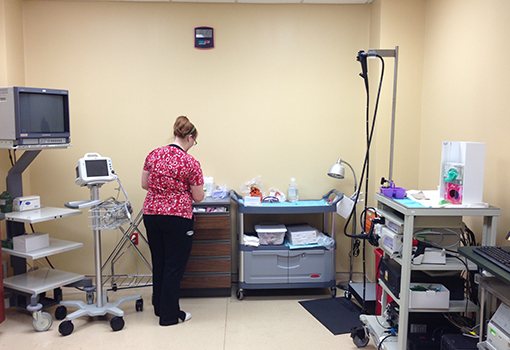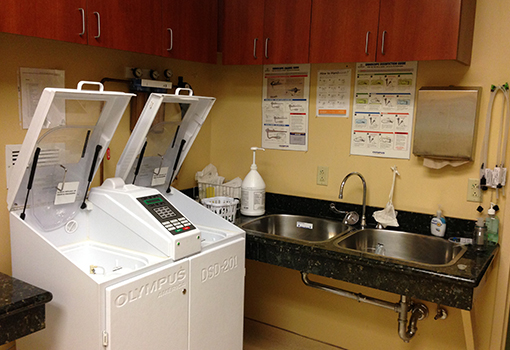EGD
EsophageoGastroDuoduoscopy – EGDWhat is an EGD?
A gastroduodendoscope is a long flexible tube that is thinner than most food you swallow. It is passed through the mouth and back of the throat into the upper digestive tract and allows the physician to examine the lining of the esophagus, stomach, and duodenum (the first portion of the small intestine).
Abnormalities suspected by X-ray can be confirmed and others may be detected which are too small to be seen on X-ray. If the doctor sees a suspicious area, he can pass an instrument through the endoscope and take a small piece of tissue (a “biopsy”) for examination in the laboratory. Biopsies are taken for many reasons and do not necessarily imply cancer.
Other instruments can also be passed through the endoscope without causing discomfort, including a small brush to wipe cells from a suspicious area for examination in the laboratory (a form of “pap test” or cytology) and a wire loop (snare) to remove polyps (abnormal growths of tissue).

What preparation is required?
For the best possible examination, the stomach must be completely empty so you should have nothing to eat or drink (including water) from 11 p.m. on the evening before the examination or for at least six hours before its performance. Your doctor will be more specific about the time to begin fasting, depending on the time of day that your EGD is scheduled.
Be sure to let your doctor know if you are allergic to any drugs.
A companion must accompany you to the examination because you will be given an injection to help you relax. It will make you drowsy so you need someone to take you home. You will not be allowed to drive after the procedure. Even though you may not feel tired, your judgment and reflexes may not be normal.
Please bring your X-rays with you, they may be very important for comparison and localization of abnormalities.
What should I expect during the procedure?
Your doctor will give you a medication through a vein to make you relaxed and sleepy, and the back of your throat may be sprayed with local anesthetic. While you are in a comfortable position, the endoscope is inserted through the mouth and each part of the esophagus, stomach, and duodenum is examined.
What happens after the EGD?
You will be able to leave the endoscopic area as most of the effects of the medication have worn off. Your throat may be a little sore for a couple of hours and you may feel some “gassiness” and fullness in the abdomen for a few minutes right after the procedure because of the air that was introduced to examine your stomach.
You will be able to resume your diet as soon as the EGD is over unless your doctor instructs you otherwise.
Are there any complications of EGD?
EGD is safe and associated with low risk when performed by physicians who have been specially trained and are experienced in this endoscopic procedure.
One major complication is perforation in which a small tear through the wall may allow leakage of digestive fluid. This complication may be managed simply by aspirating the fluid until the opening seals or may require surgery.
Death is extremely rare but remains a remote possibility.
Other risks include drug reactions, etc.
Why is EGD necessary?
May problems of the upper digestive tract cannot be diagnosed by X-ray. EGD may be helpful for the diagnosis of inflammation of the esophagus, stomach, and duodenum (esophagitis, gastritis, duodenitis) and to identify the site of upper gastrointestinal bleeding.
EGD is more accurate than X-ray in detecting gastric (stomach) and duodenal ulcers, especially when there is bleeding or scarring from a previous ulcer.
EGD may detect early cancers too small to be seen by X-ray and can confirm the diagnosis by biopsies and brushings.
EGD may also be needed for treatment, such as removal of swallowed objects and polyps and stretching of narrowed areas of the esophagus. Active control of upper gastrointestinal bleeding through the endoscope is safe and effective. Endoscopic control of bleeding reduces the need for transfusions and surgery in these patients.
EGD is a safe procedure which is well tolerated and is invaluable in the diagnosis and proper management of disorders of the upper digestive tract. Your doctor’s decision to perform this procedure was based upon his assessment of your particular problem. If you have any questions about your need for an EGD, do not hesitate to discuss them with your doctor.



